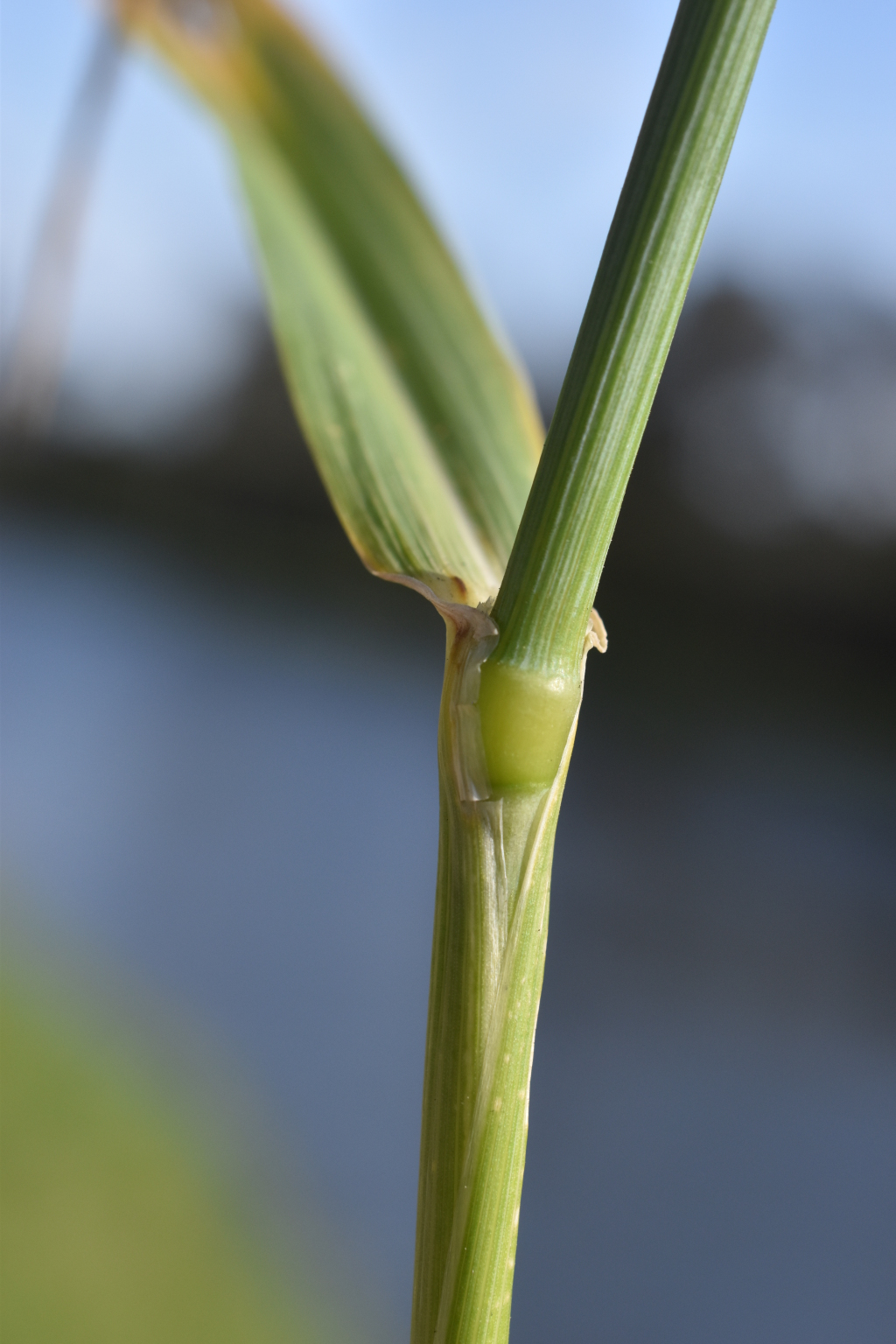Triticum aestivum
L. Bread WheatErect, robust, often glaucous annual with culms to 1.5 m high. Leaves rather few, smooth and glabrous (sheath of lower leaves often finely pubescent); blade flat, 12–35 cm long, 5–15 mm wide; ligule truncate, membranous, 1–2 mm long; auricles narrowly falcate and encircling the stem or occasionally lacking. Inflorescence a rather dense, more or less 4-sided spike, 5–15 cm long (excluding awns); rachis glabrous except along lateral angles. Spikelets 7–15 mm long (excluding awns) and about as wide, 3–6-flowered (usually maturing 2 or 3 grains); glumes equal, truncate, 6–10 mm long, the midvein strongly keeled toward the apex, sometimes exserted as a mucro or a scabrous awn to 2 cm long; lemma resembling glumes but, when awned, the awns usually longer (to 12 cm); palea subequal to body of lemma. Flowers Sep.–May
LoM, MuM, Wim, VVP, VRiv, RobP, MuF, GipP, OtP, WaP, Gold, CVU, GGr, DunT, NIS, HSF, HNF, VAlp. Naturalised in all States. Appearing wherever seed is dropped, especially near stock feeding areas, rail and trucking yards, as well as around cultivated paddocks, but probably not truly naturalised anywhere in the State.
Walsh, N.G. (1994). Poaceae. In: Walsh, N.G.; Entwisle, T.J., Flora of Victoria Vol. 2, Ferns and Allied Plants, Conifers and Monocotyledons, pp. 356–627. Inkata Press, Melbourne.
 Spinning
Spinning




